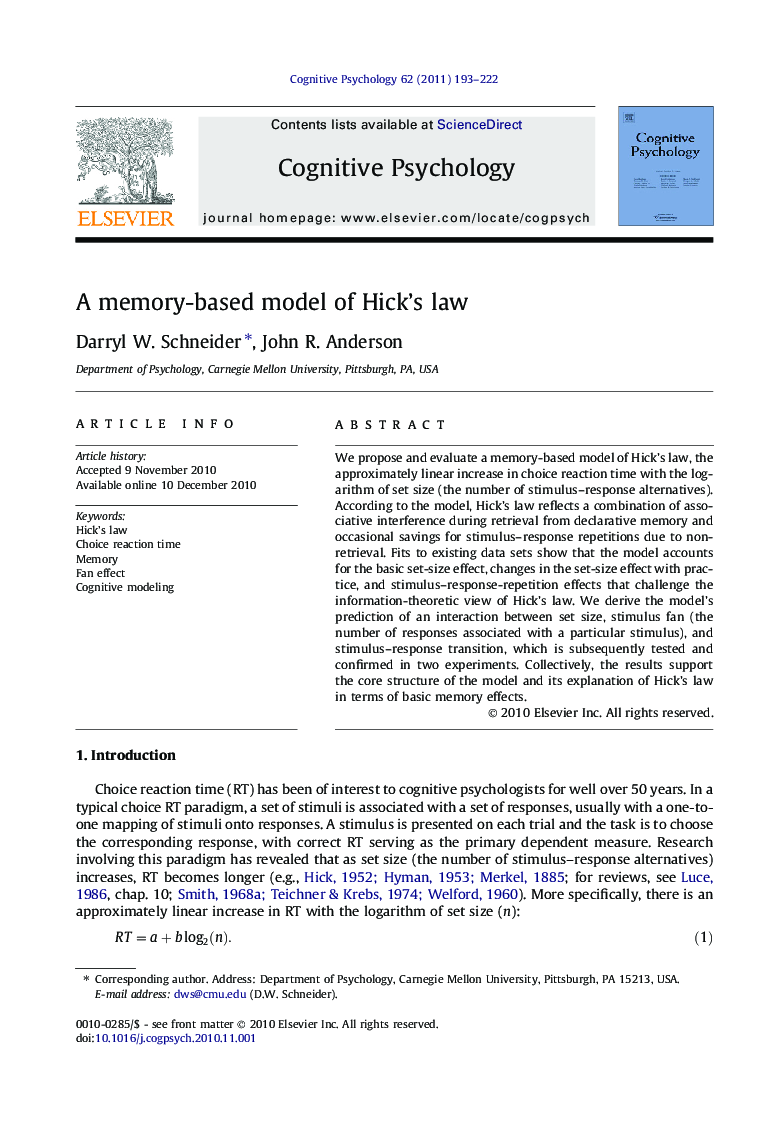| Article ID | Journal | Published Year | Pages | File Type |
|---|---|---|---|---|
| 916951 | Cognitive Psychology | 2011 | 30 Pages |
We propose and evaluate a memory-based model of Hick’s law, the approximately linear increase in choice reaction time with the logarithm of set size (the number of stimulus–response alternatives). According to the model, Hick’s law reflects a combination of associative interference during retrieval from declarative memory and occasional savings for stimulus–response repetitions due to non-retrieval. Fits to existing data sets show that the model accounts for the basic set-size effect, changes in the set-size effect with practice, and stimulus–response-repetition effects that challenge the information-theoretic view of Hick’s law. We derive the model’s prediction of an interaction between set size, stimulus fan (the number of responses associated with a particular stimulus), and stimulus–response transition, which is subsequently tested and confirmed in two experiments. Collectively, the results support the core structure of the model and its explanation of Hick’s law in terms of basic memory effects.
